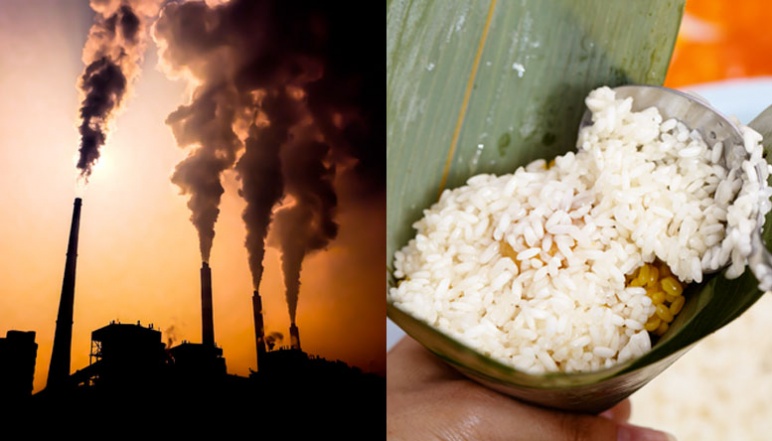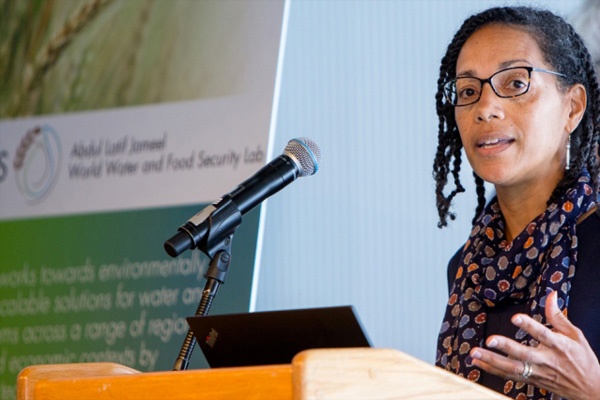Our Research Quantifying mercury contamination of rice and its impact on food security in China

Photo credit: iStock Images
Principal Investigators
Challenge:
With air pollution from coal leading to increasing levels of mercury deposition in local soils, how is the safety of rice grown there affected?
Research Strategy
- Evaluated the current levels of mercury exposure from rice in China
- Used atmospheric modeling tools to project future mercury exposure levels based on possible policy decisions and technology changes
- Used findings to inform local and international policy makers to promote air pollution control measures that reduce mercury contamination
Project description
Ensuring food security into the future, especially in industrializing regions, will involve not just ensuring sufficient supply and distribution, but also ensuring that food remains safe for human consumption. A key pollutant that can cause health impacts in humans is mercury, which is released into the atmosphere via coal-fired electricity generation and other industrial activities. As monomethylmercury (MMHG), it is toxic and bioaccumulative, and can cause neurotoxic impacts. Recently, rice – a staple food for over half the global population -- was identified as a potential MMHg exposure pathway to humans. In China in particular, MMHg exposure via rice ingestion is becoming an emerging food security issue. China is the world’s largest producer and consumer of rice as well as the largest source of mercury pollution in the world. Despite this, there has been little attention to exploring this problem to better understand where and when this contamination can affect food security. In particular, this is because mercury sources, deposition and biogeochemical processes governing MMHg bioaccumulation in rice are complex and vary in time and space.
The research of this project sought to better understand the issue of MMHg in rice, from the perspective of food security. There were three main objectives: 1) identify critical locations in China where the risk of MMHg is high, 2) understand the sources and processes by which MMHg contaminates rice, and 3) project future changes in MMHg levels in rice grains. To do this, the research team linked environmental modeling (including atmospheric mercury transport and rice MMHg bioaccumulation) with economic cost analysis of MMHg contamination. They used state-of-the-art tools, linking the GEOS-Chem atmospheric chemical transport model for mercury with the China-Regional Energy Model (C-REM), a global energy-economic model with provincial-level detail in China.
This project resulted in a greater understanding of present and projected future changes in MMHg levels in rice and potential impacts to food security. Results can aid in identifying policy recommendations and remediation strategies for minimizing risks and were communicated with local and national communities in China.
Outcomes
- Created rice paddy biogeochemical cycle model for Hg to better study various sources of Hg, such as the atmosphere or soil, and to better understand how different regions of China that will be impacted by Hg contamination over time
- Determined that Hg released from soil correlates with rice Hg hotspots and accounts for variation in location of Hg concentrations
- Identified that regions in central China are critical locations with high atmospheric Hg accumulation and will reap the most health benefits under stricter policy
- Estimated using biogeochemical model estimate that without further regulation, atmospheric Hg deposition and Hg concentration in rice will increase 86% and 13% respectively
Publications
Present and Future Mercury Concentrations in Chinese Rice: Insights From Modeling
Sae Yun Kwon, Noelle E. Selin, Amanda Giang, Valerie J. Karplus, Da Zhang, Global Biogeochemical Cycles, 2018
News
Additional Details
Impact Areas
- Food
Research Themes
- Sustainability & Adaptation
- Economics, Policy, & Practices
- Modeling & Data Analytics
Year Funded
- 2015
Grant Type
- Seed Grant
Status
- Completed



